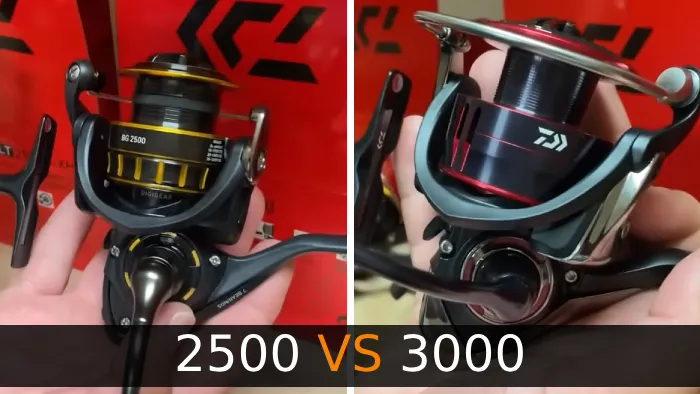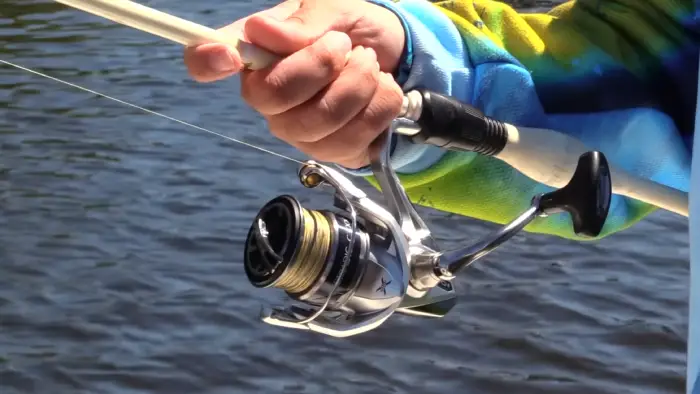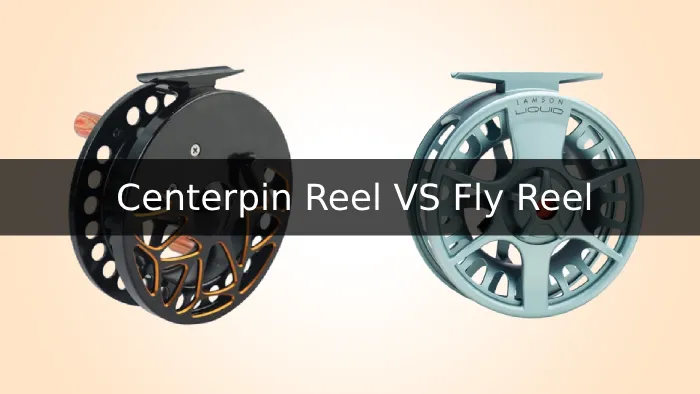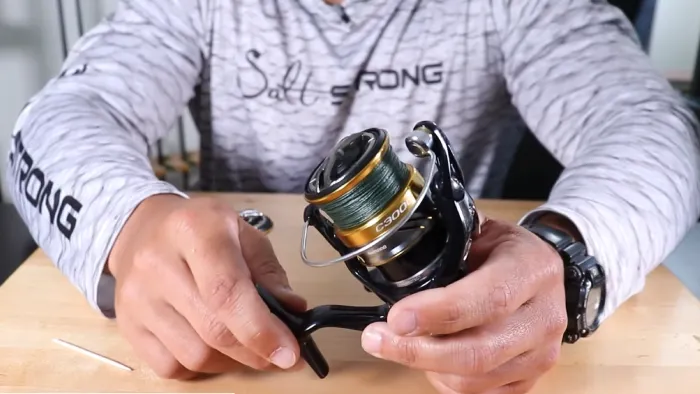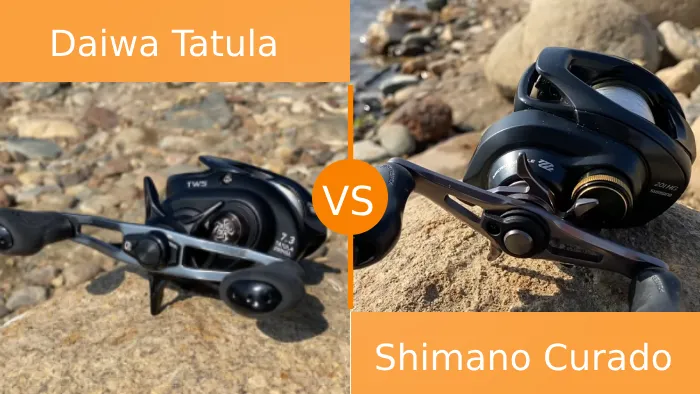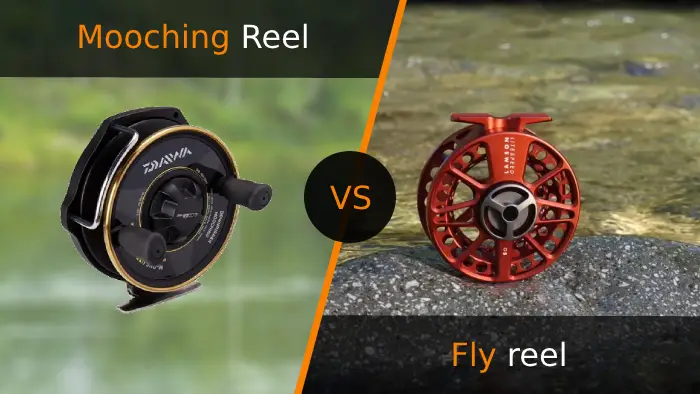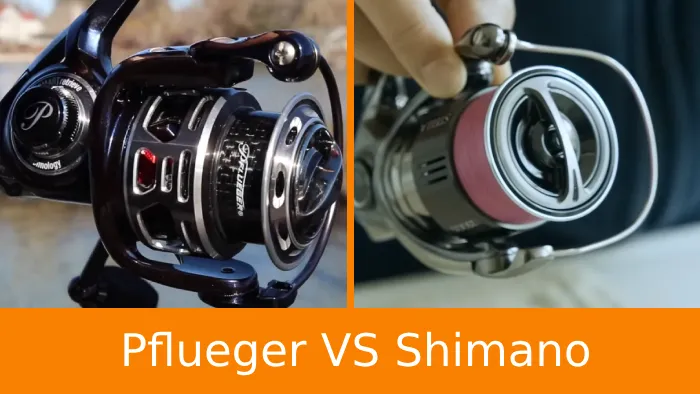2500 vs 3000 Reel: 5 Differences to Consider for Fishing
As an angler, you are often faced with choices that can significantly impact your fishing experience regarding reels of 2500 and 3000 sizes. Several differences immediately come into play when comparing the 2500 vs. 3000 reel sizes.
One notable distinction between these reel sizes is line capacity. A 3000 reel boasts a deeper spool, giving it the upper hand in holding more fishing lines than its 2500 counterpart.
Another significant difference lies in the arbor size. The central part of the spool, where you tie your fishing line, varies between the two sizes. 3000 series reels often feature a smaller arbor compared to their 2500 counterparts.
This seemingly subtle distinction can substantially impact your casting and retrieval techniques.
We’ll discuss the differences, factors influencing the choice between 2500 and 3000 reels, and how to determine whether a reel is a 2500 or a 3000 reel.
Differences Between 2500 vs 3000 Fishing Reel
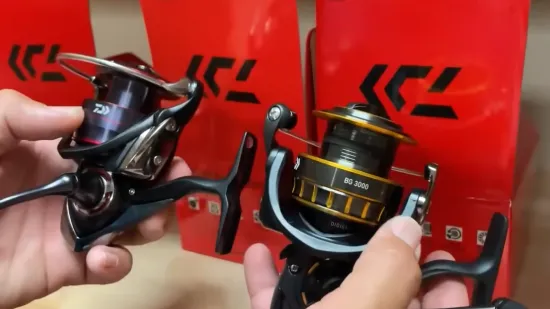
There are some differences between 2500 and 3000 reels. The following are listed:
- Line capacity
- Arbor size
- Handle design
- Line type
- Versatility
Take a closer look at the differences between 2500 and 3000 reels, so that you can select the right reel for your application.
1. Line Capacity
When considering line capacity, you have to note that the difference in line capacity between a 2500 and 3000 reel can be significant.
With a deeper spool, the 3000 reel size can hold more fishing line than its smaller counterpart. This increased capacity is particularly advantageous when going after larger or harder-fighting fish.
With line capacity (lb/yds) ranging from 8/200 to 12/145, the 3000 reel can handle a wider range of fishing conditions and challenges.
On the other hand, a 2500 reel has a line capacity of only 6/255 to 10/140. While still capable of landing a variety of fish, the 2500 reel size may not be sufficient for all types of fishing.
2. Arbor Size
Another difference between 2500 and 3000 fishing reels lies in the size of their arbor. The central part of the spool where you tie your fishing line may vary between the two sizes.
A 2500 series fishing reel typically has an arbor size of approximately 19 to 25 millimeters in diameter.
In contrast, a 3000 series fishing reel may have a slightly smaller arbor size, generally ranging from 18 to 23 millimeters in diameter.
This difference in arbor size may not seem like a significant issue, but it can affect the casting distance and the smoothness of the fishing reel’s operation.
3. Handle Design
The handle design is another difference between a 2500 and 3000-size reel. Some 3000-size reels feature T-handles, which provide a sturdier grip and help prevent hand fatigue during extended fishing trips.
2500-size reels, on the other hand, may have barrel handles, which provide better reel balance and are easier to crank.
Your choice of handle design depends on personal preference and comfort, so test a few out to determine which one you prefer.
4. Line Type
The decision between a 2500 and 3000-size reel can also hinge on the type of fishing line you plan to use. 2500-size reels are typically suited for 8 to 12-pound fluorocarbon or similar lines.
In contrast, 3000-size reels can handle heavier diameter lines such as 10 to 40-pound braided lines. The thicker the line diameter, the more line capacity you’ll need, which means a 3000 size reel will be better equipped to handle it.
Reel Comparison Chart: 2500 vs 3000
| Aspect | 2500 Size Reel | 3000 Size Reel |
| Line Capacity | 6/255, 8/175, 10/140 lb/yds | 8/200, 10/170, 12/145 lb/yds |
| Arbor Size | 19-25mm in diameter | 18-23mm in diameter |
| Handle Design | Barrel handle | T-handle |
| Line Type | 8-12 lb fluorocarbon or similar | 10-40 lb braided lines |
| Versatility | Suited for lighter setups | Balance between light and heavy |
How to Read Fishing Reel Numbers to Determine if It’s a 2500 or 3000?
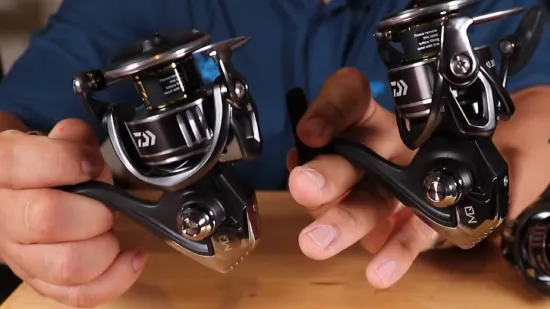
It is necessary to take a few steps to determine whether a fishing reel is a 2500 or a 3000. The following are among them:
Step 1: Locate the Reel Specifications
When you’re trying to figure out the size of your fishing reel, the first step is to locate its specifications.
These specifications should be printed or engraved on the reel body, typically on the side plate or the reel foot. Look closely for any labels or inscriptions that may provide crucial information about your reel’s size.
Step 2: Identify the Number Series
Once you’ve located the specifications, it’s time to identify the number series. The number series is crucial in determining your fishing reel’s size. Look for a series of numbers, often displayed in the format “2500” or “3000”.
Step 3: Understand the Meaning of the Numbers
Understanding the meaning of the numbers on your fishing reel is vital. Generally, you can break down the numbers into two parts: the first digit(s) and the last two digits.
The first digit(s) is an essential indicator of the series or family of reels that your fishing reel belongs to. In our example, “25” in “2500” and “30” in “3000” signify different series of reels. Reels within the same series usually have similar design and features.
The last two digits typically represent the size or class of the reel within that series. In our example, “00” in “2500” and “00” in “3000” represent the size. It’s essential to keep in mind that the higher the number, the bigger the reel.
Do 2500 and 3000-size fishing reels have differences in weight?
There can be differences in weight between 2500 and 3000-size fishing reels. While the weight of these reels can vary depending on the brand and model, in many cases, 2500 and 3000-size reels are designed to be similar in weight.
This allows anglers to choose a size that suits their specific fishing needs without a significant weight difference.
However, it’s essential to check the specifications of the specific reel you’re interested in, as there may be slight variations between brands and models.
Can the spools of 2500 and 3000-size fishing reels be interchanged
In many cases, you can interchange the spools of 2500 and 3000-size fishing reels. This interchangeability is a practical feature offered by some reel manufacturers, providing you with flexibility in managing your line capacity.
It allows you to adjust your reel’s line capacity to suit different fishing situations without the need to invest in multiple reels.
However, it’s essential to check the specific reel models and manufacturers, as not all 2500 and 3000 size reels may offer this compatibility.
Refer to the reel’s user manual or contact the manufacturer for confirmation on spool interchangeability for your particular reel model.
What size rod goes with a 2500 reel?
A 2500 reel pairs well with a 7-foot light action rod for tasks like dock shooting for crappie or finesse tactics such as drop-shotting for bass.
When dock shooting, spooling the reel with a 6-pound line and matching it with this length and action of the rod provides excellent control and sensitivity for precise casting.
For drop-shotting, stepping up to an 8-pound fluorocarbon line and a 6 1/2-foot medium action rod complements the 2500 reel’s versatility, allowing you to handle different fishing scenarios effectively.
This setup offers a balanced and responsive combination for these finesse fishing techniques.
What fish species can you catch with a 2500 and 3000 fishing reel?
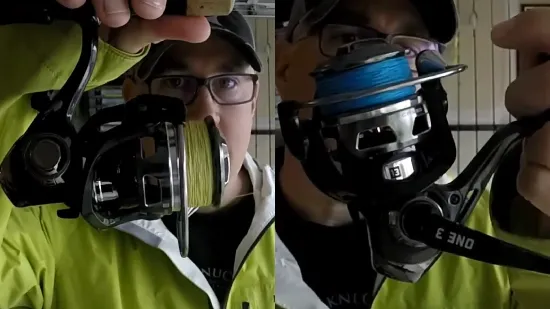
You can catch a variety of fish species with both a 2500 and 3000 fishing reel, depending on your target and fishing conditions.
A 2500 reel is well-suited for surf fishing when targeting fish like whiting, flounder, and smaller bass closer to shore, particularly in troughs and shore breaks. Pairing it with a 6-7ft medium rod is ideal for these situations.
On the other hand, a 3000 series reel provides versatility for smaller jerk baits and lighter drop-shot rigs, making it suitable for catching small to medium-sized bass.
In saltwater fishing, where you don’t require excessive torque or drag capacity, both the 2500 and 3000-size reels work well for species like sea trout.
Depending on your interests and target species, you may choose a 2500 or 3000 reel for fly fishing in Wisconsin or another suitable location.
Make the Right Choice Between a 2500 and 3000 Reel for Your Fishing Adventures
It is now clear to you that 2500 and 3000-size fishing reels differ significantly, along with the factors that influence your decision and how you can determine the size of a reel.
These distinctions in line capacity, arbor size, handle design, line type, and versatility play a vital role in tailoring your gear to specific fishing needs.
Whether you’re pursuing crappie with finesse or battling larger fish species, the reel size you choose can significantly impact your angling success.
Consider your target species, preferred fishing techniques, and personal comfort to choose between a 2500 and 3000 reel.
With the right knowledge and the perfect reel in hand, you’re ready to cast your line and reel in those memorable catches.

